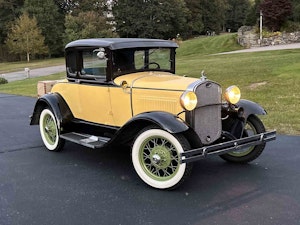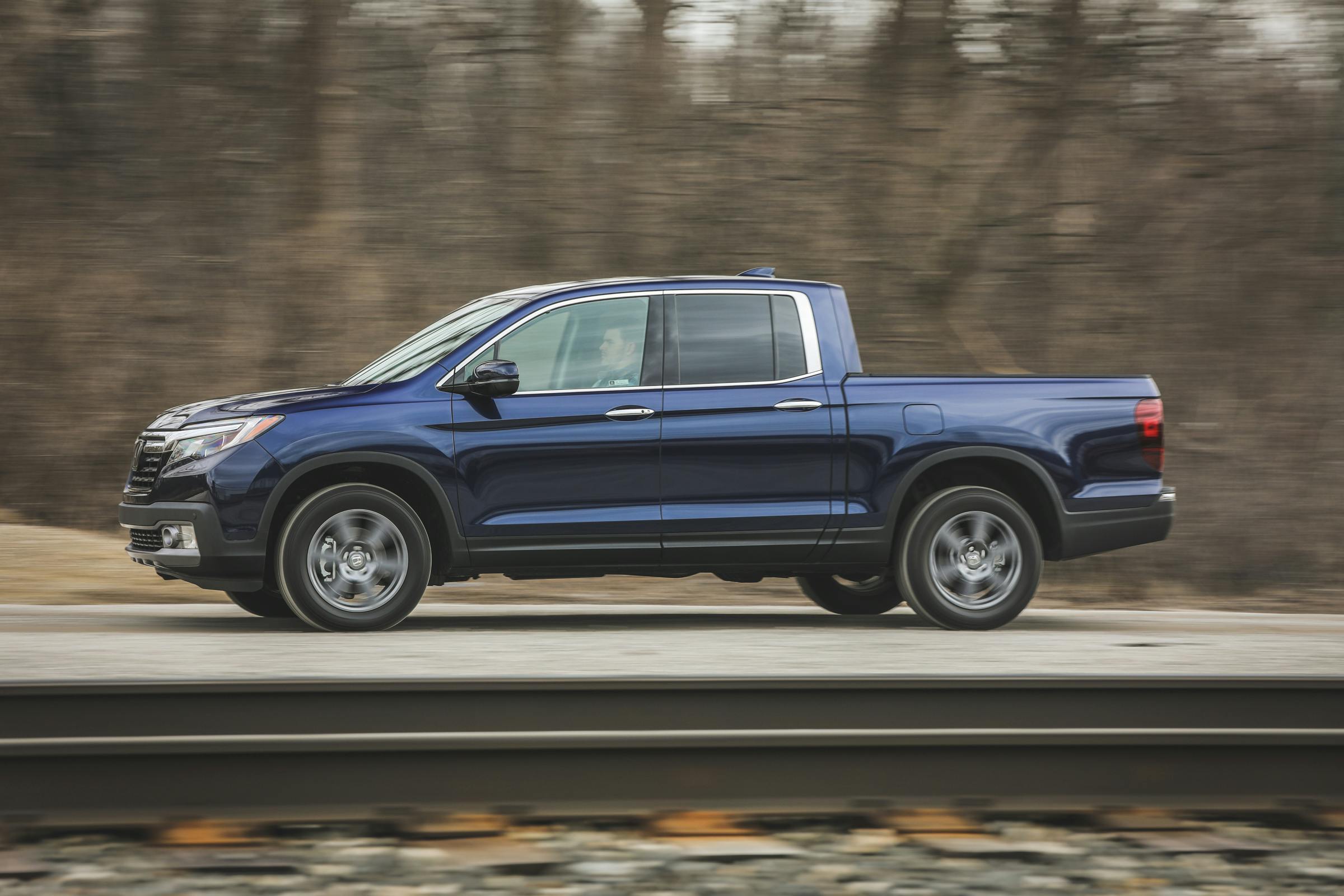Media | Articles
Review: 2020 Honda Ridgeline RTL-E AWD
No matter how you feel about the second-generation Honda Ridgeline, you can’t deny the fundamental honesty of the thing. Its predecessor was basically a Honda Pilot SUV with a minimum-viable-product bed in place of the third row, dressed up in a style best described as “steampunk bewildered.” The current Ridgeline dispenses with that pretense. From most angles, it could be mistaken for a Pilot—or even an Odyssey minivan. If you need a Pilot with some exposed cargo space, this is the vehicle for you.
This honest approach is a bit controversial, since today’s half-ton trucks have never been as capable as they are today, and they’ve also never been so frequently used as part of lifestyles which would work just as well with an Accord (or, whisper it, a Miata) as they do with an F-150 Raptor. Which leads to an ironic circumstance, namely: Plenty of people buy a Silverado because they want to be seen in a truck, but nobody would buy a Ridgeline for that purpose. You only buy a Ridgeline instead of a Pilot if you genuinely think you’re going to need that different capability. Which makes Honda’s minivan-based half-ton both the least serious truck on the market… and the most serious. How good is it at filling these expectations?
Ridgelines start at $33,900 for a FWD Sport and run all the way to $43,520 for the faux-tough Black Edition AWD. We tested the RTL-E AWD, which has the features of the Black Edition without the appearance changes. All Ridgelines are supplied with the 280-horsepower, 3.5-liter J35 Honda V-6, which for a while was the hardest-working engine in captive-import show business because it powered everything from the Accord to the Acura MDX to the RL luxury sedan. All-wheel-drive is a $2240 option on lower trims and standard with the high-end models, making the true price swing across all Ridgelines just eight grand.

Honda really has just two vehicle platforms nowadays: narrow car and wide car. The Ridgeline, like the Odyssey and Pilot, is a wide car. Which is another way to say it doesn’t have a separate frame. It’s not meant for industrial-grade hauling or towing. Customers with a heavy-duty set of requirements should read, and understand, the listed capabilities before taking delivery.
If you’ve driven the current Pilot or Odyssey, you won’t find much to surprise you inside or out. The interior of the RTL-E is basically what Honda usually calls an EX-L in its cars: thin, heavily-plastic-processed leather and a heavy helping of artificial textures across a complex dashboard with a center touchscreen and separate climate controls. Choosing this trim level gets you a heated steering wheel and a memory driver’s seat, which slides back when you open the door in a manner familiar to anyone who ever owned a Nineties-era Grand Marquis.
Marketplace
Buy and sell classics with confidence
As with the Odyssey, the Ridgeline is adaptable to a wide range of driver body types; a six-four, 300-pound driver could share the vehicle with a five-foot hundred-pounder and neither would have any trouble getting comfortable. Visibility is superb, with just a hint of visible hood on the positive side and an odd contour of the nonfunctional front vent windows on the negative. The center console is cavernous, and rear-seat room is adequate for adults, but the wide-open spaces of a Silverado are conspicuous by their absence. Your chimpanzee-proportioned author had no trouble touching the rear seatback from the driver’s chair.

The steering is pretty good, with direct feedback and a reassuringly linear correlation between action and reaction, but like the early Bugattis, and like most modern Hondas, the Ridgeline was built to go, not to stop. The J35 provides the same approximate push as a 5.3-liter V-8 in a crew-cab GM fullsizer while drinking about the same amount of fuel—22.9 mpg reported over 1050 miles. You can win a lot of stop-light drags in this thing, but you’d be wise to remember that Honda’s transverse automatics are sometimes far from bulletproof. Slowing down is a different matter. Perhaps because of the constant demands made on brake assist by the deeply moronic “Honda Sensing” nanny-system (more on that later), the first push on the brake pedal is not exactly reassuring. I could easily bang the back of it against the floor as if it were attached to a tired ‘74 Caprice. The winning strategy is to double-pump the brake; normal service is resumed the second time you stroke down. As someone who has owned, and raced, Hondas for some time now, I didn’t expect much better.

Another standard-equipment Honda annoyance — gale-force wind noise — is present here in spades. Noise, vibration, harshness? You get as much of all three as you can stand, thanks to seemingly nonexistent insulation and a ride that is the most truck-like thing about the Ridgeline. I can understand it in the Accord, because the lack of refinement in an otherwise stellar car is how you sell customers on the Acura TLX, but there’s no Acura equivalent to this product so it just comes off as mean-spirited.
It’s hard to imagine someone driving this back-to-back with an equivalently-priced F-150 and being terribly impressed. You have to be a Honda loyalist to look past the Ridgeline’s annoyances in daily operation. No doubt it will last a very long time, but that’s also true of its competition nowadays.
As an RTL-E, our test vehicle had a pretty decent infotainment system which, in typical Honda practice, delivers better sound quality than you’d expect in exchange for an experience that usually feels a full generation behind that of the competition. It also had the full suite of Honda Sensing features, including the worst active cruise control your author has ever experienced. You can, and possibly should, disable it the minute you start the car. If you don’t, you get a choice of three following distances. The “close” one will have your Ridgeline panic-braking its tailgate in the air when a vehicle 200 feet away eases off the throttle, which in turn will cause everyone around you to either report you as drunk to the highway patrol or throw full 7-Eleven cups in your direction. I didn’t have the courage to try the “far” setting, because I was afraid that someone in Singapore would change lanes and my Ridgeline would respond by leaping nose-first into a ditch.
I did get to experience the joy of having my carotid squashed because the car making a left turn ahead of me in the intersection wasn’t moving out of my way quickly enough for Honda Sensing’s comfort. “BRAKE!” the dashboard flashed—and that wasn’t a recommendation, that was a warning that the Ridgeline was about to ABS my neck into the seatbelt. My son’s backpack left the back seat and landed on the dashboard. The five cars behind me swerved into oncoming traffic. The car ahead of me had long disappeared from view before the Honda’s brake pump stopped chattering. All of this happened at the robust speed of about 11 miles per hour. I’m told it has something to do with protecting pedestrians. Maybe they’re working on a new slogan: “You can force-choke the nicest people by waving your hand vaguely at the front bumper sensors of a Honda.”

Since this is a truck, I loaded it up with three mountain bikes and a bunch of gear for a 300-mile round trip to Northeastern Ohio. The bed of the Ridgeline is pretty high, for no distinguishable reason, and the tailgate can be a little reluctant in operation. On the positive side, there’s simply more room for both bikes and people than you’d get in the default-choice Subaru Outback. I can’t help but think, however, that the Ridgeline should be about three or four inches lower. This would massively improve the utility of the bed with very little penalty in visibility. One of the charming aspects of the original “import trucks” from 50 years ago was the accessibility of the bed. Even my 2000 Nissan Frontier had a relatively easy load compared to something like an F-150, but this Ridgeline closes the gap to the Ford in a non-admirable fashion.
Who should buy the Ridgeline? As noted, the active-lifestyle crowd might find that it suits their self-image better than a RAM Rebel while providing more capability than an Outback. It’s a “tweener” vehicle, one made for a very select crowd. Our RTL-E stickered at $42,020, including destination. That’s about three grand more than the equivalent Honda Pilot SUV, which frankly will be a better choice for most of the Ridgeline’s potential customers. It’s also dangerously close to the real-world transaction prices of mid-level domestic half-tons.
From what I’ve seen, the primary Ridgeline customers are Honda loyalists who expect that they might occasionally need mulch-compatible storage space. I think that’s about right. If you view this as a way to get a truck bed on a Honda, you’ll be pretty happy. If you’re thinking of the Ridgeline as a sensible alternative to conventional trucks, you might be disappointed with the fuel economy, the lack of freeway composure, and the suite of half-baked electronic interferences.
Consider it an honest answer to two honest questions: Do you really need a truck?And Do you really need that truck to have a Honda badge?
2020 Honda Ridgeline RTL-E: $42,020 plus destination.
Pros: Good visibility, adequate space, traditional Honda virtues.
Cons: Too high, too expensive, too noisy, doesn’t offer a lot of tangible advantages compared to the body-on-frame competition.
Summary: It’s a Pilot with a truck bed, for slightly more money than a Pilot without one.
























































You need to compare apples to apples. The Silverado in ANY V-8 configuration falls short of the mpg numbers put up on here. The Silverado also has worse dependability, higher cost of ownership, higher rates of repair, and higher likelihood of costly repair (over $10,000) than all but 1 other truck.